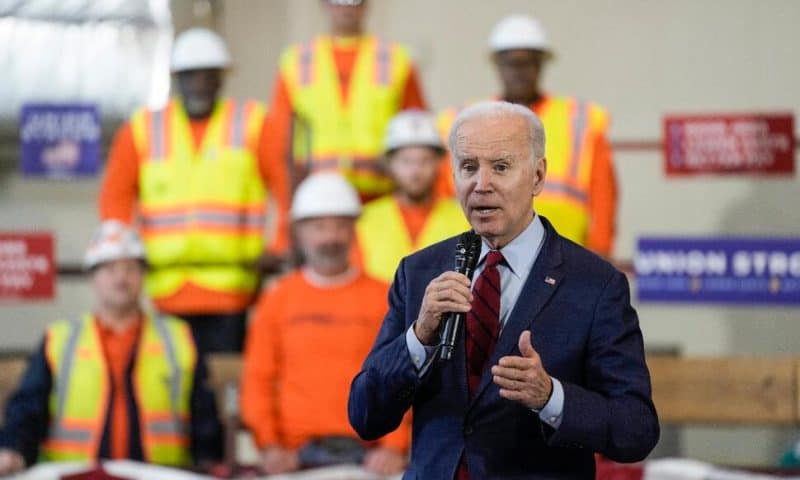The Biden administration is releasing a playbook on best practices for training workers as the low 3.8% unemployment rate and years of underinvestment have left manufacturers, construction firms and other employers with unfilled jobs
WASHINGTON — The Biden administration on Friday is expected to release a playbook on best practices for training workers as the low 3.8% unemployment rate and years of underinvestment have left manufacturers, construction firms and other employers with unfilled jobs.
Worker shortages have been a frustration for some employers, who upped their investments in new factories and construction projects after President Joe Biden signed into law funding for infrastructure, computer chips and a shift toward renewable energy sources. Finding employees to replace retirees also has become a challenge.
As part of the 2021 pandemic rescue package, state and local governments have committed $11 billion to worker training. The money must be spent by the end of 2026 and the administration is trying to ensure the investments pay off as promised.
“This is a chance to make a once-in-a-generation investment in the skills and well-being of workers in your communities — an investment that will reap benefits well beyond pandemic recovery,” Treasury Department official Veronica Soto says in draft remarks obtained by The Associated Press.
The eight-page playbook being issued in conjunction with the remarks details possible models that the administration believes state and local governments can follow.
The document encourages them to use registered apprenticeship programs, which have seen enrollment more than double over the past decade to 607,509 active apprentices, according to the Labor Department. Starting salaries for those who complete the programs average $80,000.
Harris County, Texas, committed $10.9 million to place 1,000 of its low-income residents into union apprenticeships and technology training programs, having put a focus on opportunities for women, people of color and those without a four-year college degree. The state of Maine plans to double its total number of apprenticeships with $11 billion.
Funding also has gone to community colleges, with Oklahoma budgeting $80 million to expand its nursing education programs. Connecticut is using $19.5 million to improve the mentorship and coaching given to community college students, a program that has increased students’ grades and kept more of them enrolled.
Money also is going to supportive services for child care and transportation, which are two of the big reasons why people are unable to complete training or stay on the job. Iowa is making $26.6 million available to help employers make child care available, while Phoenix’s airport is offering child care scholarships to workers.

